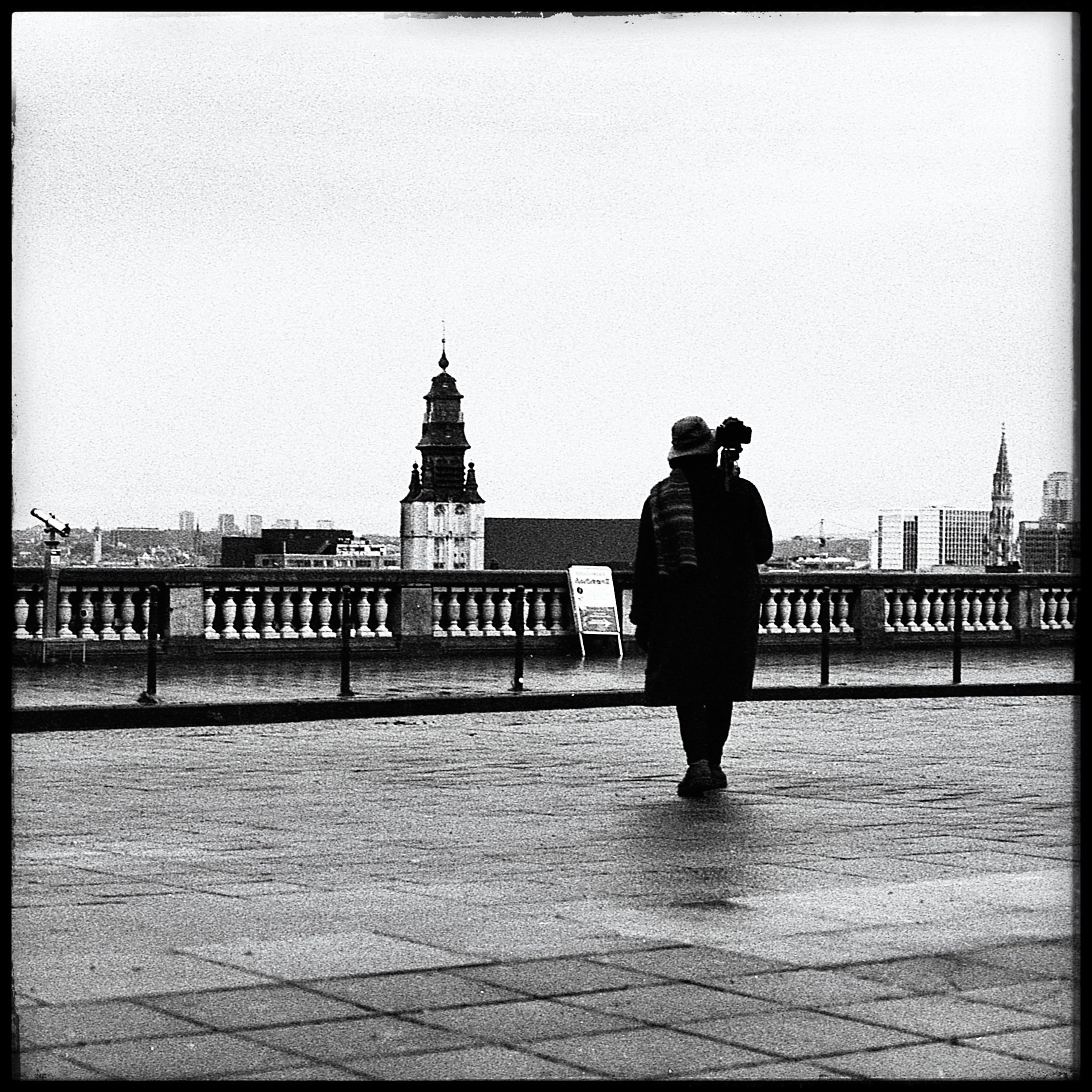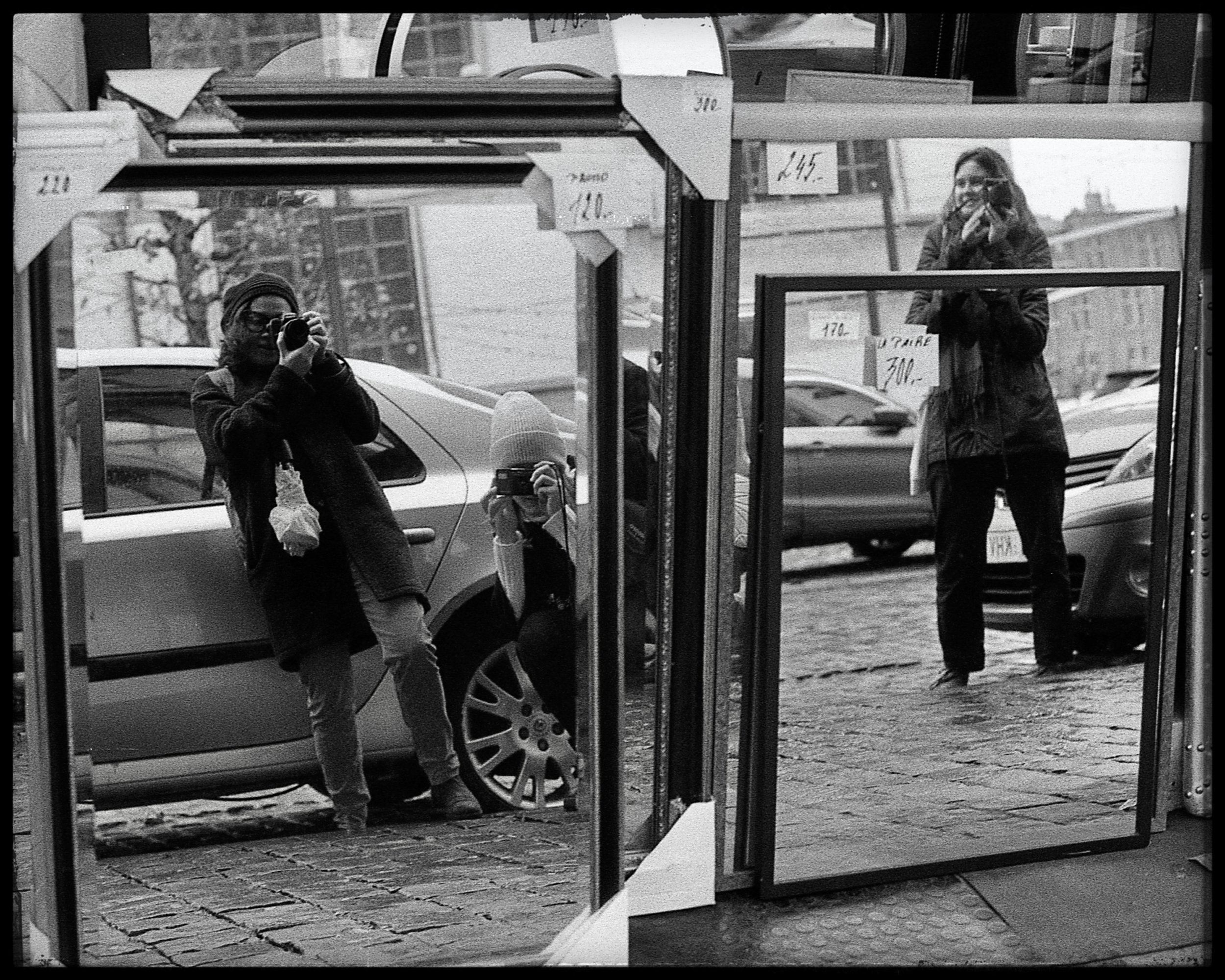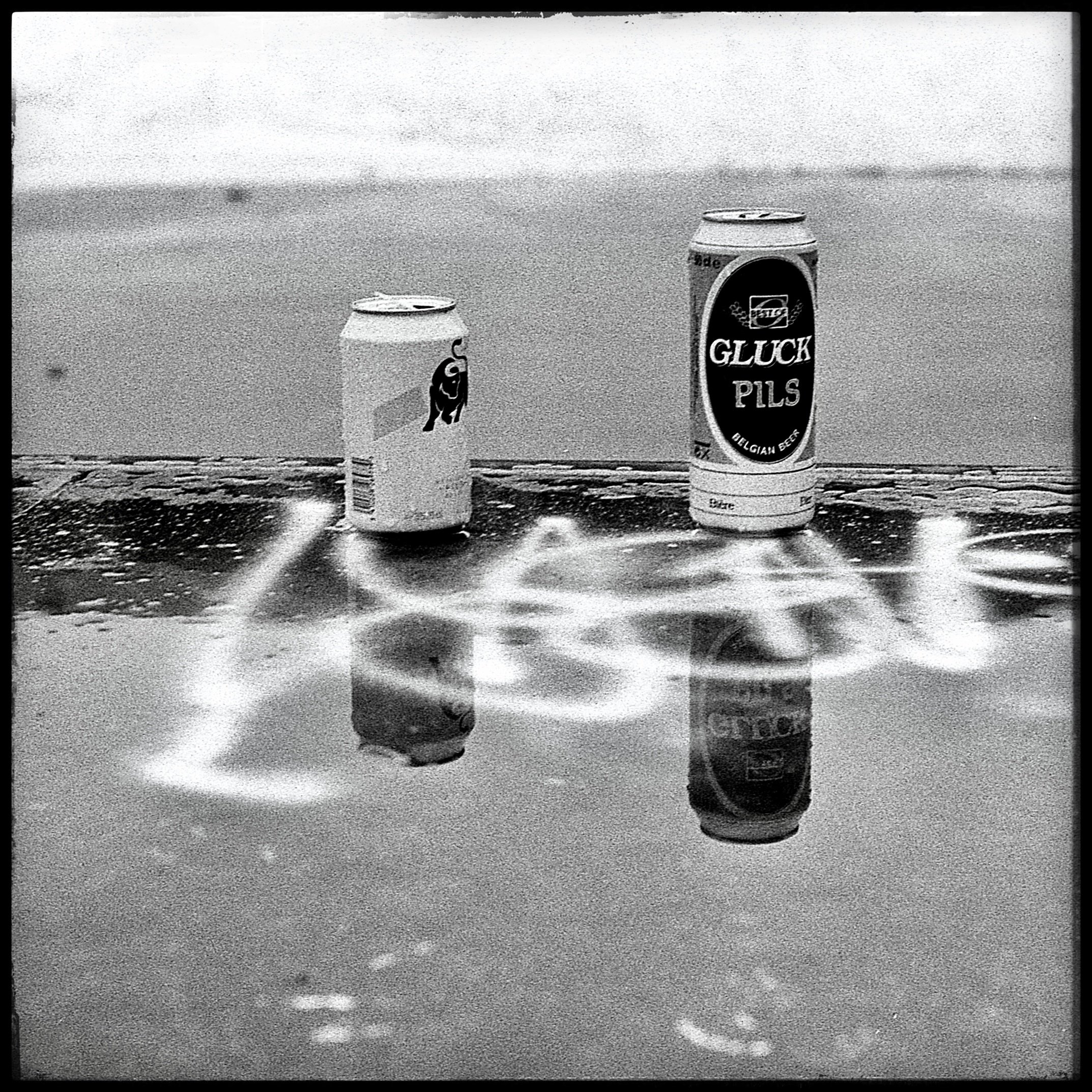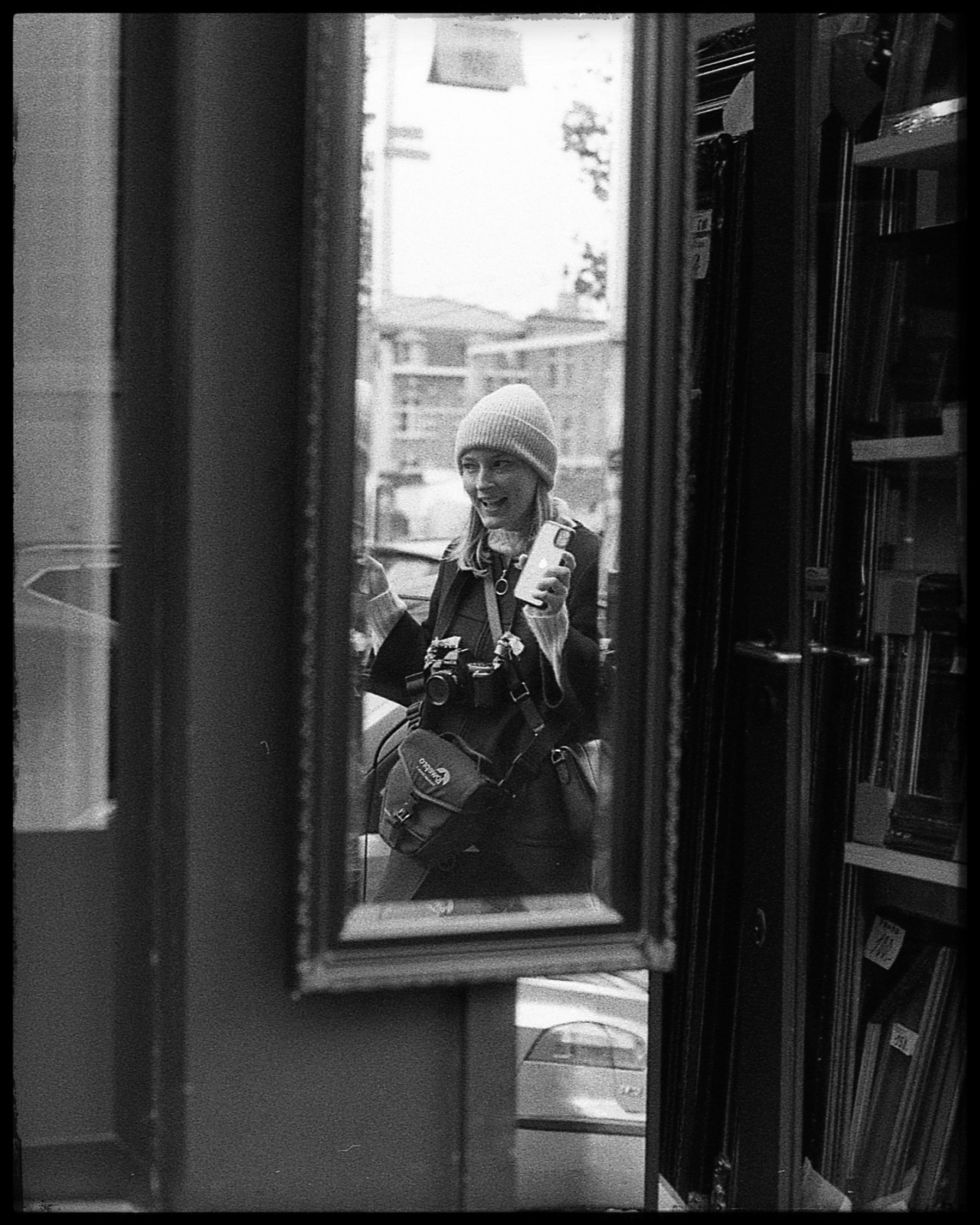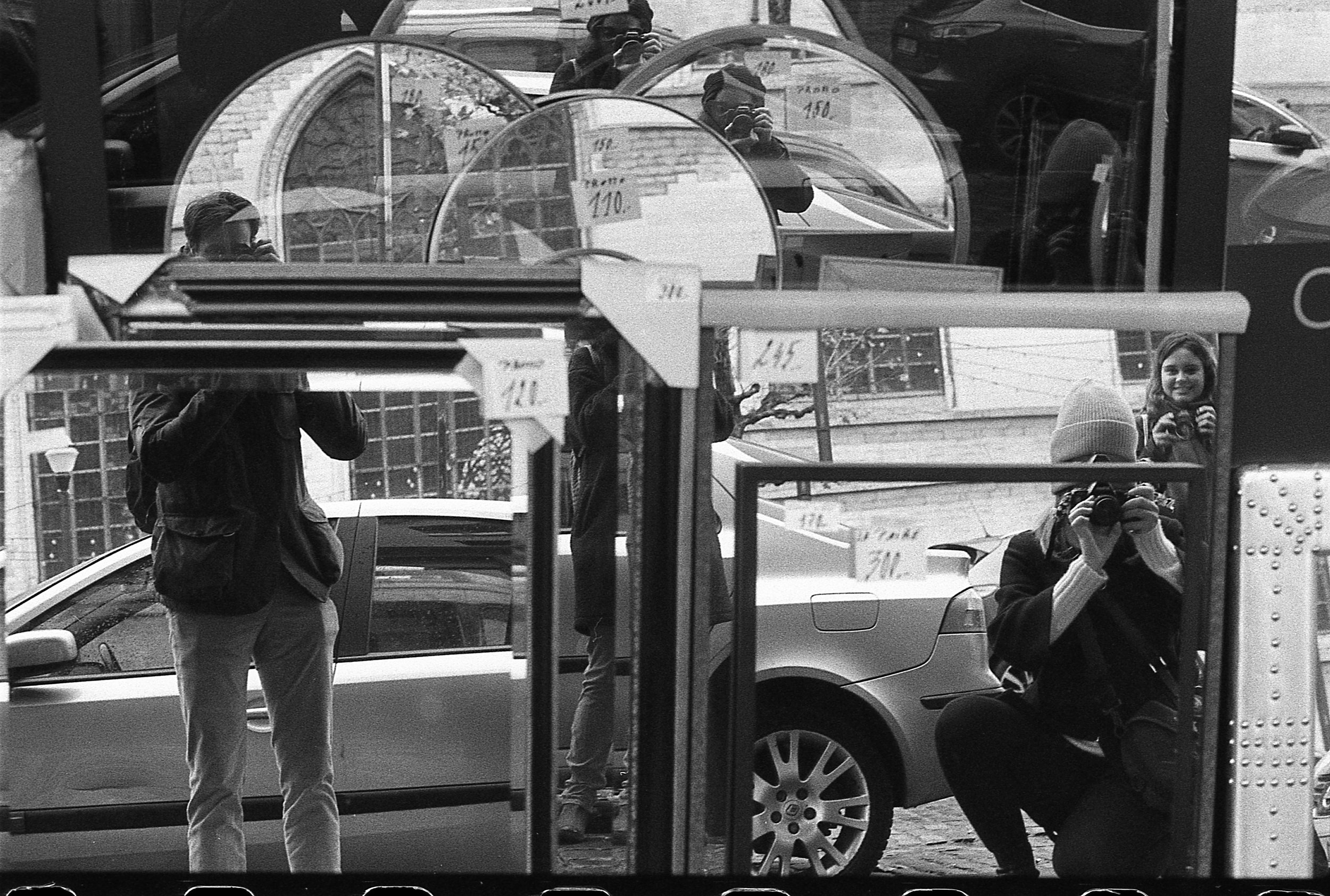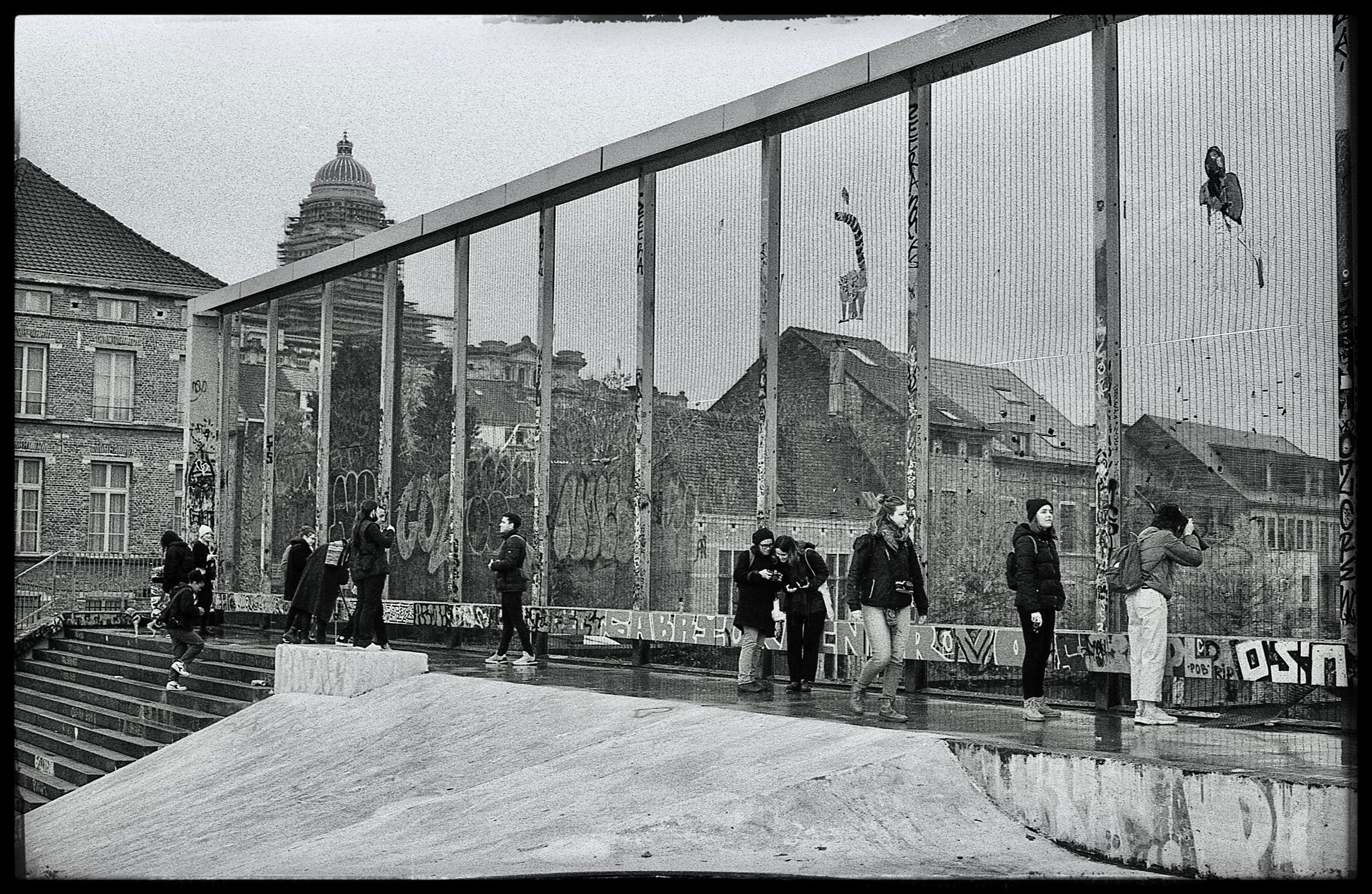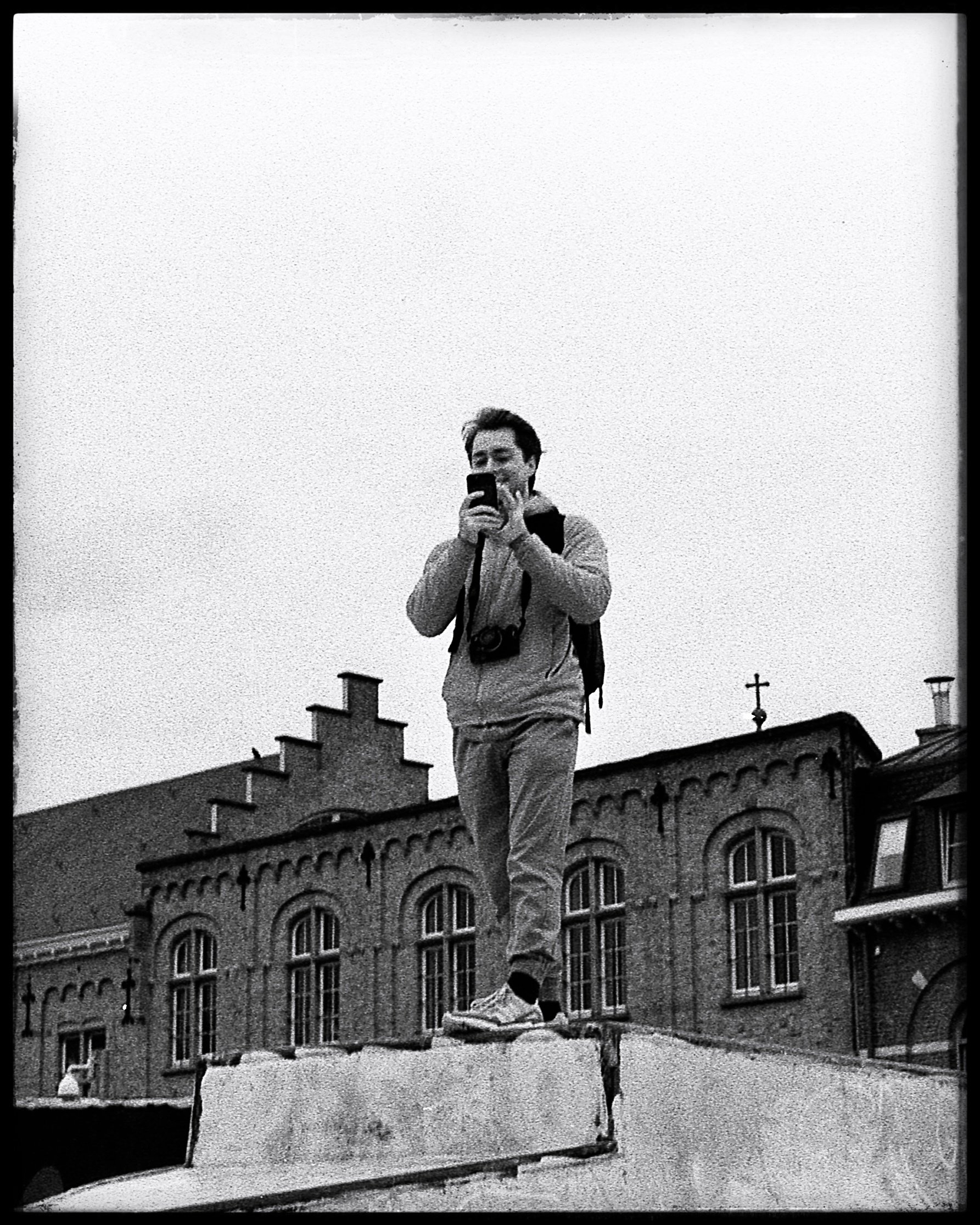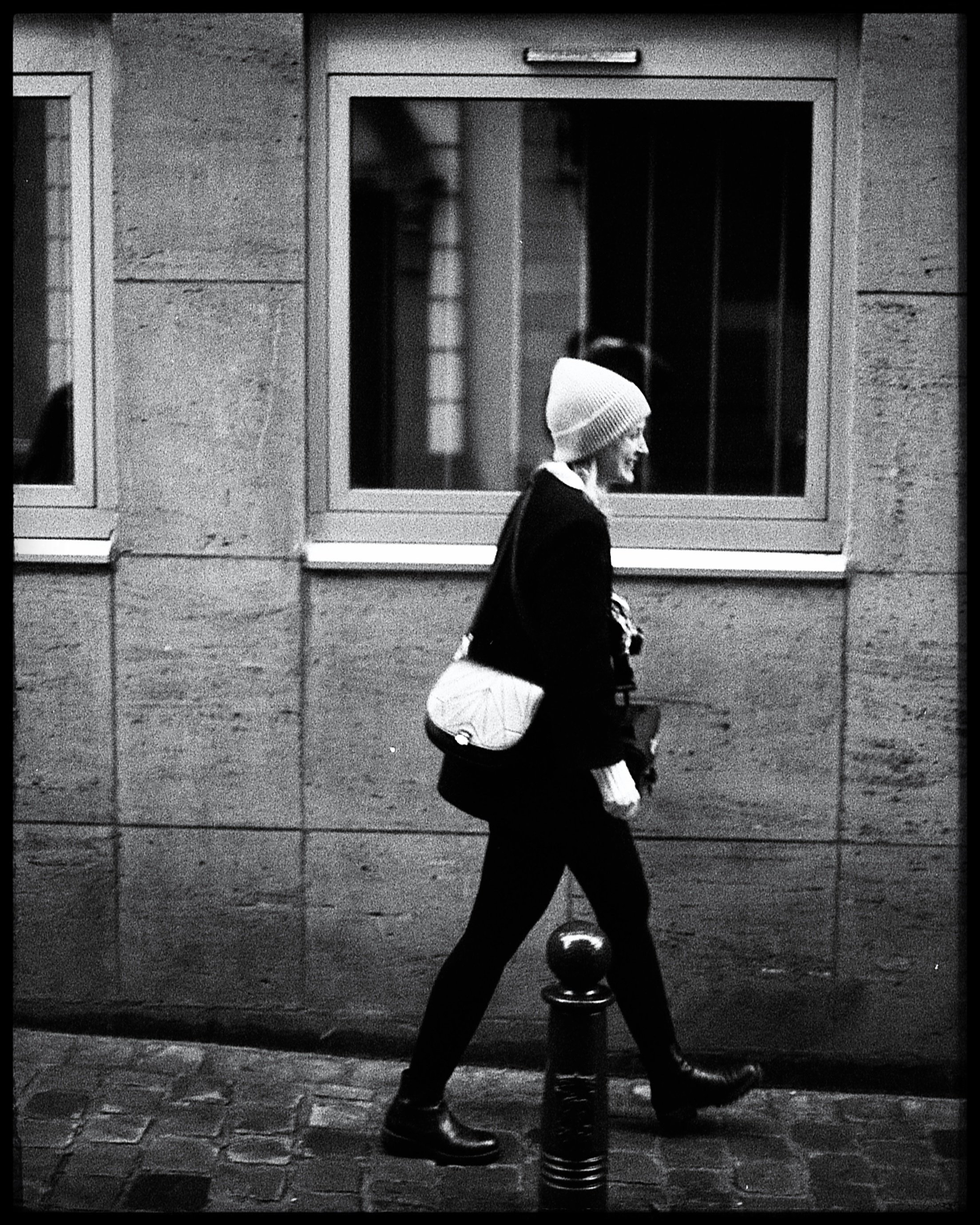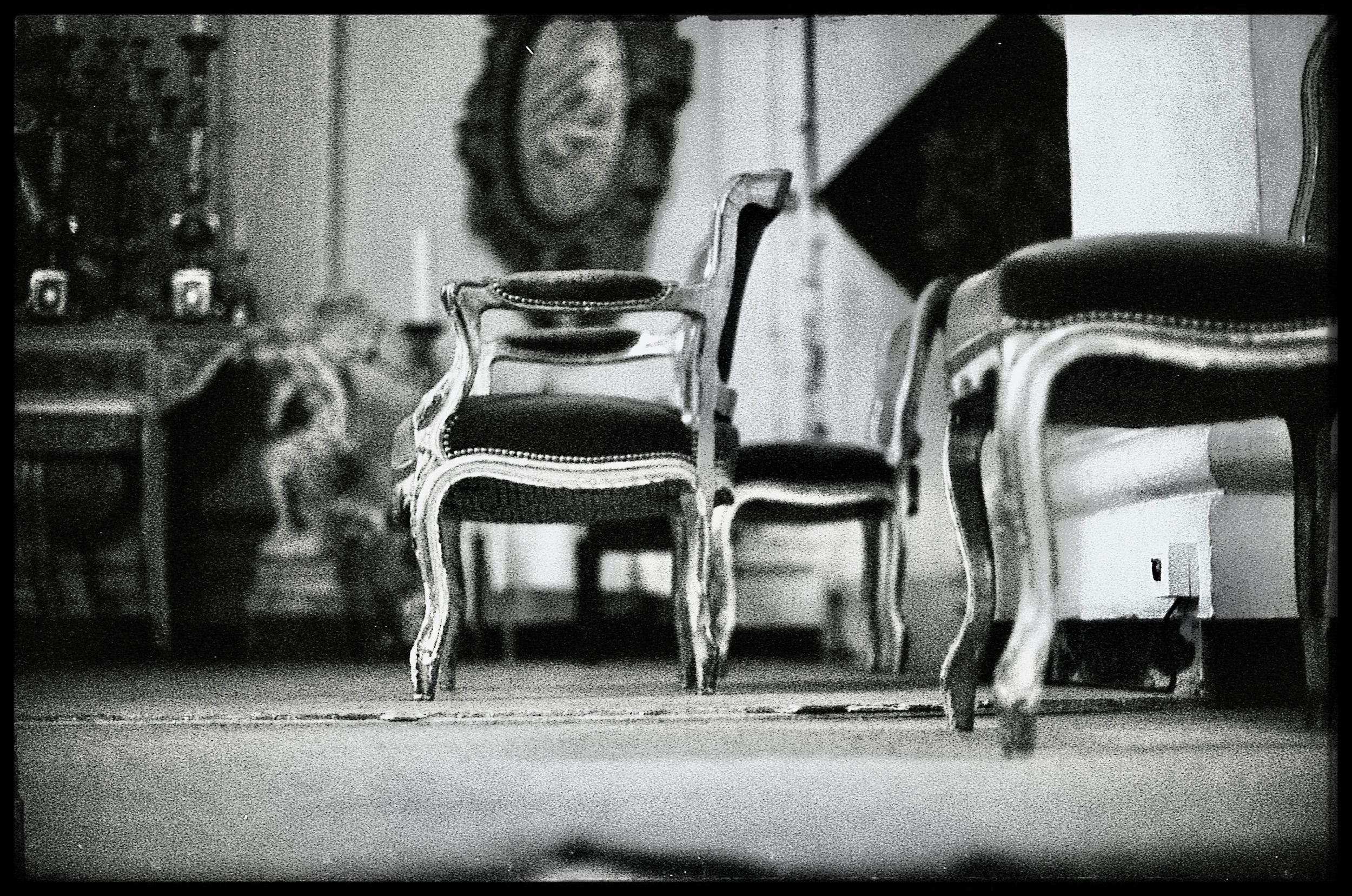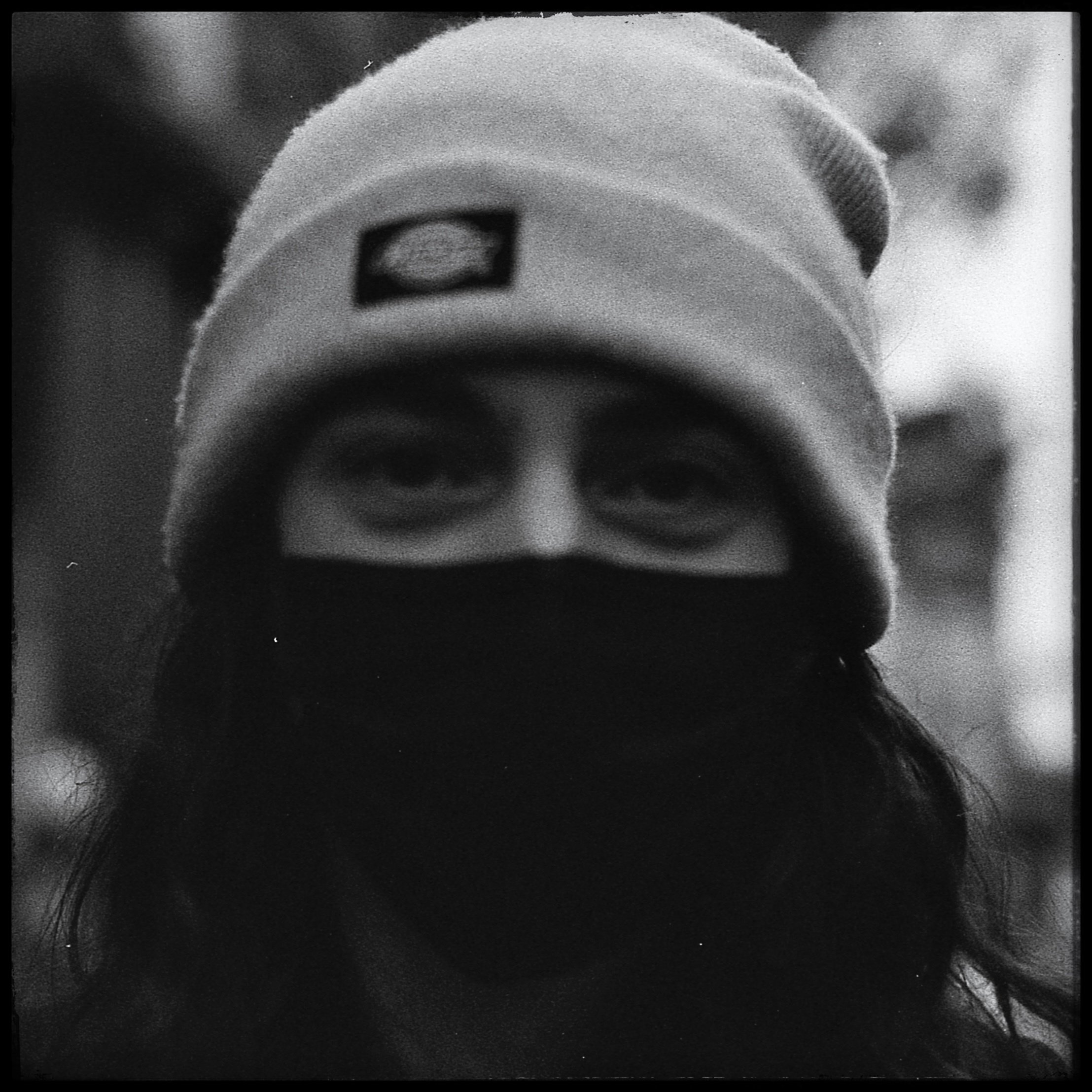Disclaimer: this is an older page, that I haven’t updated in a while.
Progress
Lately I have been browsing through my archives, rediscovering photos I shot last year. It is interesting to see how much has changed since I first started this hobby. Obviously, there has been some improvement in developing as this process takes a lot of practice. Interestingly, my compositions and also the way I scan my photos got better. The first photo was shot with my stolen Mamiya 645, the second one with the Hasselblad 500CM.
The third photo, taken in September 2022, showcases the true power of the Nagaoka Seisakusho and the result of many hours of training in the dark room. Sharp, detailed, good contrast. I love this photo almost just as much as I love this forest (Sonian Forest, Tervuren).
Nagaoka Seisakusho 45 with a 150mm lens at f11 and a shutter speed of two long seconds.
Fomapan 400 with Ilford ID11 (1+1 for 14 minutes)
Analog adventures in Eupen
A day with the Nagaoka Seisakusho
Last week, I went on an adventure inside my own country! I finally had the courage to walk around with my huge Big Bertha, a photography behemoth. The Nagaoka Seisakusho uses large 10x12cm sheets of film, delivering unimaginable detail and depth to photos. The downside is of course the size and the weight of the camera.
Castle of Heks
For this camera, I’ve got two lenses: a smaller 150mm used for simple landscape photography and a larger 250mm, ideal for portraits. Next, I also need to carry my sheet holders around. I’ve got three recto-verso holders, giving me six shots in total.
Finally, a sturdy tripod and a large cloth are essential for good compositions.
For these shots, I used Ektachrome 100. This is a transparent slide film produced by Kodak, requiring E6 development chemistry. The latter is quite challenging, even after more than a year of darkroom experience. Luckily these shots came out fine!
The switch to analog
I use photography to calm down after busy working days, to meditate and to observe the world differently. It therefore made perfect sense to try out analog photography techniques.
Using older and therefore fully manual cameras forces you to slow down. The bigger the camera, the slower the process.
My favourite photo is probably the one I took of a wonderful tree, isolated from the background thanks to a lovely perspective, some great natural lines and of course the golden sunset that exclusively shone onto the large stem of it. This light only lasted for less than 5 minutes so I had to be extremely fast. This speed contrasts with the evanescent quality of the scene: a mysterious and silent late autumn evening.
Zoniënwoud, Tervuren (2020)
Hasselblad 500CM - 80 mm lens - Kodak Portra 160
Hohes Venn
Small daytrip to one of the more beautiful national parks of Belgium.
Mid-december, because of the dreadful Belgian weather, it can get somewhat challenging to shoot film. Therefore, a bit of flexibility and last-minute planning is required. I stopped working on my thesis at noon to jump in my car and drive off towards this exciting part of Belgium.
My gear: the Hasselblad 500CM, a few rolls of Fomapan 100, one Cinestill and of course a red filter! The latter one is extremely important when shooting black and white photos in nature. The light passing through the red filter is literally filtered: the red waves can pass and blue/green (being opposites in the light spectrum) are blocked. The result of this simple trick is that the skies get considerably darker and the red/yellow/orange tones get highlighted.
A good example of darker skies and highlighted “orange” grass.
Slightly out of focus (this is a gigantic challenge with the Hasselblad, unfortunately) but really fond of the moody vibe.
Of course, shooting colour film is just as interesting, however because each roll of colour film is so incredibly expensive, I try to do it less. These next shots were made using Cinestill 800T. My first time using it yet I already adore it!
Can you spot the Big Bear Constellation, hidden in this photograph?
Christmas in Brussels
A short photo walk in Brussels with my Hasselblad and a fellow photographer: Stephieslens. (check out here Instagram account here)
The challenge here: poor light, a lot of people, cold weather.
Brussels Park - Cinestill 800T film.
Brussels Park - Cinestill 800T film.
Sainte Catherine - Portra 400
Photo Walk with Mori Film Lab
(21 November)
Last weekend, the guys from Mori Film Lab organized a photo walk through the “Marollen” in Brussels, starting at the “Place du Jeu de Palme”, famous for its sunday morning flea market.
The details on this piece of film are just amazing! I do need to get rid of those ugly watermarks but I don’t really know how to do that. Maybe by using distilled water instead of tap water?
I’m so happy about this photo! It was my first time shooting colour film with the Nagaoka (4x5 inch) and I had to develop it without using a specialized developing tank. Indeed, I used my flat trays in pitch black darkness, which was quite a challenge.
Even though one single piece of film sheet costs 5€ (!) I’m absolutely in love with the exceptional quality of it.
Gear: Nagaoka 4x5, Ektar 100 sheet film (October 2021)
Obivously, my favourite tree had to be captured again this sunday afternoon ;-)
(Ektar 100)
Japanese Garden, Hasselt.
(September 2021)
This temple was shot with my Hasselblad 500CM and a (rare!) roll of Fuji Pro400H. It’s a nice garden North-West of the city of Hasselt in Belgium.
Kodak Tri-X portraits
Special shout-out to my friend and colleague Andrea, whose chemical knowledge and mutual passion for analog photography have helped me progress in photography and photochemistry over the last year. These portraits were taken with the Hasselblad 500CM and a roll of Kodak Tri-X 400. This film stock is absolutely magical by the way. Its grain and contrast are ideal for portraits. Development with Kodak D-76 chemistry.
Christmas Divorce
Marriage has long been associated with Catholicism in our country. Indeed, most couples still marry before the Church - whether it be because of true beliefs or a lingering sense of tradition. The following photograph therefore tells an unpleasant and disheartening story, that of a couple’s divorce a few days before Christmas.
Indeed, I was walking through the streets of Brussels close to Place Poulaert, famous for it’s large Palace of Justice. The composition was ideal: the former lovers sitting next to each other yet keeping distance. In the second window, we observe two lawyers fighting for their clients and in the last one we see a lonesome judge carefully listening. (Of course I can’t confirm if it was a divorce but let our imagination fill the blanks). This scene was taking place only a day or two before Christmas, the holiday of peace. Paradox.
Christmas Divorce - Canon A1, Portra 400 (2019)
Photographing a Prime Minister
Mark Eyskens (born 29 April 1933), is a Belgian economist and politician in the Christian People's Party, now called Christian Democratic and Flemish, and served as Prime Minister of Belgium in 1981. (wikipedia)
It was a true honor to being able to take his portrait in his very home. A fascinating and exceptionally well versed man with so many stories to tell.
I must confess that I was rather nervous when I knocked onto his front door. I carried nothing more than my good old faithful Hasselblad 500CM (aka. Hassy) and didn’t yet have a lot of training in analog photography. But what’s life without a challenge? ;-)
Hasselblad 500CM - 80mm f2,8 lens - Kodak Tri-X 400 (a film stock that I absolutely recommend for portraits)
Hasselblad 500CM - 80mm - Velvia 50 - 1/2s exposure
Velvia is a particular type of film. Whilst most people know about negatives, this one is a “positive” image. Indeed, after developing the roll of film, you can already see the final image by holding the roll against a light source. This type of film was mainly used for diapositives (Diapo, dia’s,… the very boring slideshow that people gave for their friends after their holidays). It is way more challenging to shoot than regular film because you have to expose with much more care.
Most people will know that when shooting digital photos it’s better to underexpose because it is easier to “raise the shadows” than to lower the highlights. In film photography, however, the opposite is true. A lighter image has more detail than an underexposed image. Finally, Velvia 50 (the film I used for the girl and cat photo) is the opposite - again! Here it is better to underexpose slightly instead of overexposing. A detail I didn’t know at that time which explains the bright whites of this picture…
The true challenge of analog photography is framing. You can’t just crop a picture, what you shoot is what you get. This teaches you to move, to think, to change composition, to think again before measuring the light and pulling that trigger.
On this photo, however, I was hindered by natural elements. I shot this between other trees so moving back further would have revealed a lot of branches. I’ll soon come back to try this shot another time.
Zoniënwoud, Tervuren (December 2020). This one was shot on my Mamiya 645.
Sonian Forest vibes
A small video I made of me shooting some pictures in the chilly morning mist of the Sonian Forest in Tervuren.
Scroll down to see the final result.
Hasselblad 500 CM, 150mm, Velvia 50 slide film
People who have been following my work will recognise this tree immediately. It is by far the most mysterious one of the whole forest, can you feel the cold and terribly silent mood in this picture?
Pushing film
/!\ This is a technical piece of text: only intended for those of you who want to learn how to push film ;-) /!\
When progressing in analog photography, you will often hear the term “Pushing” film. It took me some time before I understood what it is exactly. First of all, we need to start with discussing the ISO of a film roll. ISO is basically a numerical scale to quantify how sensitive the photographic film is to light. The higher the number, the more sensitive it is and therefore the shorter you need to expose your shot. The factory will always recommend a specific ISO and in the photography community, that value is called the “Box Speed” (because it’s written on the box…)
Fomapan Black & White film with a Box Speed of 400.
The fun thing about shooting film is that you’re allowed to divert from these guidelines a bit. Let’s say you pretend the film roll should be rated at ISO 800 instead of ISO 400, then you basically assume that it’s twice as sensitive to light and thus, you need to reduce shutter speed by half as well. So, to make it a bit more concrete: when you’re shooting this Fomapan 400 at ISO 800, you’re underexposing the film significantly. If you were to develop the roll using traditional times, the picture would come out very dark.
And now comes the cool part: film exposure isn’t linear! The emulsion is VERY sensitive to high intensity light but as soon as it has been exposed a bit, it loses its initial speed. The longer you expose a film roll, the less contrast you will get between shadows and highlights exactly because the darker parts of the film roll still have more speed than the highlighted parts.
To conclude: when shooting at ISO 1600, the darker parts of your photo won’t have had any time to be exposed at all whilst the very bright parts of the picture will already have been recorded by the film roll. If you then put the exposed film roll in your bath of chemistry and you keep it in there a little longer than usual, you brighten up the picture and you get a very interesting harsh contrast on your photos!
A black and white portrait exercise…
To create this effect, I had to get a bit creative! I used my regular Canon A1 with a roll of Fomapan 400. However, I shot these at ISO 1600 (basically dramatically underexposing my pictures) and used a green lens filter (this filter also blocks 2 stops of light). Then, I used Rodinal developer at a 1:25 concentration at 20°C and kept on shaking the developing tank to enhance contrasts even further.
The result is a wonderful portrait look. Keep in mind that these photos aren’t edited at all!
C’est fini!
A very symbolic photo that I took the 8th of May 2021. On this day, the Belgian Government lifted the COVID Curfew (that normally started at 22:00). Thousands of people gathered all over Brussels to celebrate their new freedom - with the still closed Flagey Concert Hall in the background.
Canon A1 - 50mm - Kodak Colorplus


















